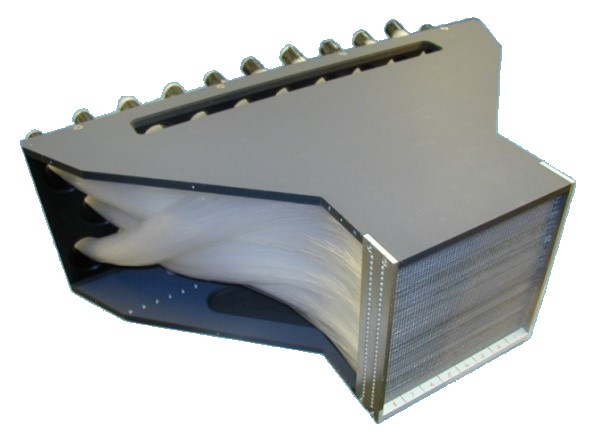SXD is the only single-crystal neutron diffraction instrument at ISIS Neutron and Muon Source and, at the moment, the only one in Europe working at a spallation source. SXD uses the time-of-flight Laue method in for the crystallographic studies of materials, from small organic molecules to catalysts, from minerals to metalorganic-complexes and framework materials. Thanks to its eleven detectors arranged all around the sample position, it can sample large 3D-volumes of reciprocal space, which is very useful, for example, in the studies of phase transitions or diffuse scattering.
In the last few years, a very successful collaboration between the Detector and the Crystallography groups at ISIS, has led to the development, building and testing of a new type of neutron detector, especially suited for the use on single-crystal diffraction instruments. During the winter shutdown, all eleven detectors that were in use on SXD since 2001, have been replaced for new ones using the newly develop technology (Wavelength Shifting Fibre, for more information see [1]).


Before and after upgrade
An intense week of testing at the start of the February cycle, with many different samples, has shown the capabilities of the new detectors. They have higher efficiency compared to the old ones, meaning that in the same exposure time they count up-to four times more. This main improvement gives SXD the ability to measure crystals of smaller sizes, or to decrease the exposure times on average-size samples, allowing to collect more data in the same length of time of an experiment with the old detectors. This also means the possibility for SXD to expand the range of science that can be done, moving towards more challenging science topics.
For example: in one of the tests, a very small crystal of only 25 mm edge of a water-containing analogue of Prussian Blue, required only a 45 minutes exposure to see diffraction spots. Such a result would have been impossible to achieve with the old detectors, both for the size of the sample and for its hydrogen content.
The instrument scientists, Silvia Capelli and Matthias Gutmann, are still testing the capabilities of the new detectors but they are very happy with the performances seen so far. They are also confident that SXD will attract new users with new and challenging structural studies.
"The detectors were installed when I started here, so I saw its predecessor in operation!" explains Matthias Gutmann. "The ones we had originally installed were state-of-the-art and the best they could possibly be. In the meantime, all the electronics have shrunk in size and are much more compact. Previously we had hundreds of cables and now we have just a few. Everything fits so neatly within the SXD cabin with plenty of room now! Every upgrade is of an awesome magnitude. This now enables us to see more complex crystal structures that could not be done before. This is a massive change for us here at ISIS, so SXD can now enable more experiments to take place with more complex samples and raising the limit to new levels."
[1] Mauri G., Sykora G.J., Schooneveld E.M, Capelli S.C., Gutmann M.J., Howarth S., Mann S.E., Zuddas F. and Rhodes N.J., (2024). Novel high efficiency 2D position sensitive ZnS:Ag/6LiF scintillator detector for neutron diffraction. J. App. Cryst. In print.
